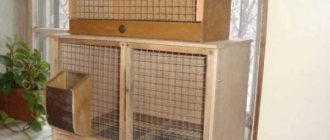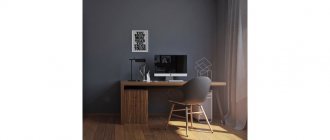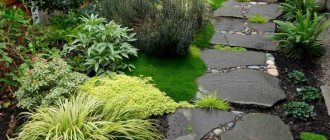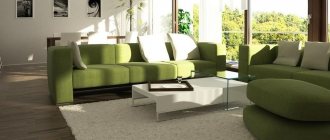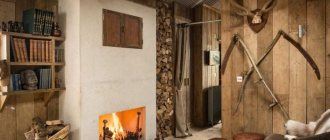Paintable wallpaper has a high level of noise absorption. Painting wallpaper - a couple of decades ago, none of our compatriots could even imagine such a prospect, but today you can transform a wall with your own hands simply by painting the wallpaper. Technology has come so far that this can be done without involving specialists, and you will get a new wall without streaks. You want the most incredible texture and colors of paints, and painting ideas are not limited to a couple of options.
Wallpaper for painting in the interior
For beginners and those who are just delving into the issue, it’s worth saying right away that not all wallpaper needs and can be painted. And even if you bought expensive textured wallpaper, it may not be the type of wallpaper that can be painted. Wallpaper for painting has the required degree of moisture resistance, is distinguished by deep relief, does not have a multi-color pattern and, it happens, contains pigment.
When choosing wallpaper for painting, you should pay special attention to its texture and its compatibility with your future interior
In the interior, such wallpaper can be combined with other coatings, combining textures and colors in every possible way
Types of wall materials
If you are just thinking about how to choose wallpaper for painting on your walls, we hasten to assure you that you will not find many varieties of such materials. There are only four types of wallpaper that can withstand repainting, but such coatings may differ in parameters and design.
All wallpapers of this type can have a smooth or textured surface. The relief texture serves not only as a stylish decorative element, but also provides additional protection for the walls.
Paintable non-woven wallpaper has a significant advantage over other alternative options: it sticks to the wall very easily , has an elastic structure and does not stretch due to accidental contact. The canvases fit comfortably together and do not change their location on the wall, even if the glue has not completely dried.
Remember! To apply non-woven wallpaper for painting, simply apply glue to the desired wall surface.
Thanks to the non-woven material included in such wallpapers, several more advantages of their use can be identified: they have high strength, wear resistance and can be used as protection for walls with defects , since they have reinforcing properties.
Vinyl wallpaper can also be used as a base for applying paint. Moreover, such wallpapers are produced on both paper and non-woven bases, therefore they are universal in use. Vinyl coating provides the ability to create a stylish surface, and rich shades only emphasize the sophistication and sophistication of their design.
The quality parameters of such wallpaper are also considered quite high. Moreover, if you choose a good paint, you can even periodically clean such wallpaper from dirt.
Glass cloth or fiberglass wallpaper is a heavy-duty facing material that adheres securely to the surface and lasts much longer than other types of paintable wallpaper.
Turning a blind eye to some features, we can say that this is the best wallpaper for painting . Among their many advantages are strength, wear resistance, moisture and temperature tolerance, the ability to protect walls and other characteristics.
But wallpaper of this type can cause irritation on the skin during the gluing process, so stock up on protective gloves and cover your face with a special mask.
Paper wallpapers attract consumers because they are considered safe for health. They have the lowest cost and are lightweight, but their service life and gluing features do not always meet consumer expectations.
You can use such wallpaper for painting only if you do not expect long-term results.
Having decided on the choice of the best wallpaper option for painting, do not forget to consult with specialists about all the intricacies of their use and care during operation.
Some coatings require special conditions in the room : for example, paper wallpaper does not tolerate moisture, so it is not suitable for the bathroom, and it is not advisable to glue fiberglass wallpaper in the bedroom. Don't forget about the risk of purchasing defective products: make sure you choose wallpaper that offers fair value for money .
Attention! The best brands of wallpaper for painting are considered to be proven foreign brands: AS Creation, Erismann and Marburg (Germany), Tasso Glass and Mitex (Sweden), Mermet (France), ARTE (Belgium) and others.
If you want to ensure sufficient strength and durability of the wallpaper even after several paintings, give preference to two-layer or multi-layer coatings . But keep in mind that the process of painting such coatings will be more complicated.
Paintable wallpaper: pros and cons
When considering different options, you, as a buyer, evaluate the pros and cons of a potential acquisition. And this is reasonable, because it is correct to evaluate all sides.
"Pros" of wallpaper for painting:
- The ability to repaint the wallpaper several times, thus updating it;
- Wallpaper is highly resistant to ultraviolet radiation;
- Wallpaper masks wall defects;
- You can paint it in any color - a rich palette of choices creates unique possibilities in the interior.
Paintable wallpaper is charming because it allows you to liven up the interior without undertaking a grandiose renovation. High-quality wallpaper can withstand up to 10 dyeing cycles
"Disadvantages" of wallpaper for painting:
- Some types of wallpaper require particularly delicate care;
- You will have to purchase additional paint.
And these are just the main qualities of wallpaper. Before purchasing, read not only reviews, but also the technical qualities of the wallpaper.
Types and advantages of wallpaper for painting (video)
Disadvantages of glass wallpaper
It would be completely wrong to talk only about the advantages of glass wallpaper. After all, this material has its own application features and disadvantages that limit the possibility of use in specific conditions. The disadvantages of glass wallpaper include:
- Lack of flexibility. The material does not withstand bending loads well. In particular, if you glue canvases to curved walls with large depressions and defects, the result may be the appearance of cracks and loss of presentability. In view of this, glass wallpaper should be used exclusively on leveled substrates with a small number of defects.
- Porosity. The presence of a porous structure is both an advantage and a disadvantage of glass wallpaper. On the one hand, this property allows the walls to “breathe”, but on the other hand, it increases paint consumption. The applied paint penetrates well into the porous structure, due to which the first painting requires the use of copious amounts of paint and varnish. This, in turn, results in additional budget expenditure.
- Heavy weight. Fiberglass wallpaper itself is heavy, which can negatively affect the quality of use. The mass of the material is also increased by a layer of paint and glue used to fix the paintings on the walls. Together they create a large load on the base. For this reason, glass wallpaper is not suitable for loose substrates, inclined surfaces and ceilings. For the same reason, it is not recommended to repaint glass wallpaper many times.
- Difficult to dismantle. After gluing and drying the glue, sometimes you have to tear off the glass wallpaper, as they say “alive” - along with the plaster.
- Loss of decorative effect when re-painted. Textured glass wallpaper has a slightly pronounced relief. Each subsequent painting will lead to a deterioration in the visual effect of the decor.
- High price. Fiberglass wallpaper itself is an expensive product. Along with the need for a large consumption of paint, carrying out repairs with such material can cost a pretty penny.
Paintable wallpaper: technical specifications
Usually you buy wallpaper, imagining exactly how it will look in your interior. Here is another option - wallpaper for painting is available in neutral colors; the manufacturer can add a little white pigment so that painting occurs on a light base.
Related article: Silicone wall holders: how to attach a suction cup to tiles, how to attach Velcro and hooks for tiles
Other wallpaper characteristics:
- Rarely are such wallpapers glossy. Smooth options, of course, are found, but glossy ones are almost never. Why? It's simple: matte and semi-matte textures guarantee better adhesion to the paint and varnish composition.
- The relief surface is the main feature of such wallpapers; thanks to it, after applying color, the wallpaper becomes as attractive as possible.
There is wallpaper with a 3D effect, one of the most modern types. These are rolls with a very deep relief, which after painting create the illusion of a three-dimensional image
If, however, textured wallpaper is not what you want, then there is a relatively smooth option with a fine-grained surface.
Choice of paint coating
Popular are easy-to-use, simple compositions on water:
- latex;
- acrylic;
- water-based;
- water-dispersed.
Sometimes alkyd solutions with oils and resins can be used.
The composition of the water-based emulsion coating includes:
- latex;
- fillers;
- fastening elements;
- antiseptic;
- chemical substances.
According to environmental standards, it can be used in places where people permanently reside. This is a moisture-resistant, odorless, non-allergenic solution that can be washed with a damp cloth without damaging the surface.
Silicone-based water-based paint is used in the kitchen and bathroom in conditions of high humidity. It differs from the acrylic composition in small fractions. The latter does not contain chemical or hazardous components, so it is widely used in living rooms. Acrylic compounds are odorless, allow the wallpaper to breathe, and do not collect fumes on its surface. Drying time is 24 hours. The coating is intended for non-woven surfaces, but manufacturers produce compositions for fiberglass and paper wallpaper.
Bright interior of a children's room
Latex solution is made with water-based latex. Styrene butadiene and acrylic latex can be used. This is a material with high elasticity, long-term use, and is presented in white color, so tinting is used . Soft shades are formed, since in practice it is impossible to achieve sharp tones. Latex paint is intended for glass wallpaper and non-woven coatings with a relief structure. Latex has a slight odor and is suitable for utility areas and living rooms, except for rooms with high humidity.
After applying alkyd solutions, a strong film appears that is resistant to frequent washing. The products are mainly used in the finishing of non-residential and ancillary buildings with fiberglass coatings. The disadvantage is the content of resins and oils in the composition, which can negatively affect health and the respiratory tract. Such walls cannot breathe; condensation forms on them.
Combination of white and light green
Paint color
In order for glued canvases to become a decoration of the room, you need to make the right choice of shade and know the reflective properties of the paint. Initially, the canvases are colorless with different surfaces. First, they can be painted in any shades, mainly light ones. In living rooms, pastel colors are chosen; a delicate shade can be obtained by tinting.
When tinting at home, it is impossible to get the same shade in different containers, so computer color selection is offered. Tinting equipment will produce paint in the required range, it will be the same even in different containers. Even if the resulting volume is not enough, the tinting unit can produce the required volume of paintwork with an exact color match.
Interesting room for a boy
You also need to remember that each paint has its own reflective ability:
- Gloss . Has a sheen that reflects light. It is advisable to use it in the decoration of northern rooms, but not in southern ones with bright lighting.
- Semi-gloss . It features optimal light reflection and is used in many rooms, reflecting uneven walls (the base must first be leveled).
- Semi-matte . It has low reflective ability, well suited for the living room and bedroom.
- Satin . It reflects light strongly and glare appears in artificial lighting. Suitable for finishing bathrooms and kitchens.
Bright room for children
Which wallpaper is better for painting: types
Wallpaper intended for painting can be of three types - paper wallpaper, non-woven wallpaper and fiberglass wallpaper. It’s worth considering all three types, and you’ll decide which wallpaper is best for painting.
Characteristics of wallpaper types:
- Paper. They are produced in two versions - simplex (this is a single-layer coating, cheap wallpaper, easy to install, but not so durable), duplex (two-layer wallpaper, with a thick bottom sheet and a thin top, decorative one). Here you can also remember about coarse-fiber trellises; during production, small wood shavings are added to the material, resulting in an outwardly rough canvas or covering similar to burlap.
- Non-woven . A worthy alternative to paper wallpaper, non-woven fabric is also used in the clothing industry, so your wallpaper can be considered textile. Such wallpaper is chosen if you need to mask some surface irregularities. If the defect is no more than 5mm, the spongy structure of the wallpaper will cover it. In addition, non-woven fabric has good vapor permeability and breathability, which is an excellent quality - natural ventilation is not disturbed.
- Glass wallpaper . Completely inorganic material has to be used for their production. Another name for wallpaper is fiberglass. This is a structural modern wallpaper, which is obtained as follows: fibers are drawn from molten glass, and then they are combined into a canvas. Fiberglass wallpaper is made from canvas and can be painted: there is wallpaper with texture, there is wallpaper without texture. This type of wallpaper is not at all afraid of fungi.
Unlike non-woven wallpaper, paintable paper wallpapers are less resistant; they can withstand a maximum of 2 – 3 painting cycles
It is worth noting that although the latter type of wallpaper looks beautiful, and the quality certificate for such wallpaper usually speaks for itself, the choice has to be made towards other options, since glass wallpaper is very expensive.
Types of wallpaper for painting (video review)
Paper wallpaper: main characteristics
Paper wallpaper consists of two (sometimes three) layers, between which sawdust is placed. Thanks to these elements, the wallpaper acquires relief. Sawdust is placed chaotically and often creates the most intricate texture that can satisfy the needs of even the most demanding client. The top layer of paper wallpaper is usually impregnated with a water-repellent composition. This ensures a high level of moisture resistance and strength.
The main advantages of paper wallpaper are compliance with all environmental standards, a wide range of textures and low cost. When gluing this type of wallpaper, special care is required: folds or stretches may form on it due to the fact that the glue is applied directly to the canvas. The maximum number of colors that paper wallpaper can withstand is five. But if the texture of the material is weakly expressed, after the third painting the surface becomes almost flat. Paper wallpaper also requires delicate handling. Any mechanical damage must be promptly restored, and this significantly reduces the service life of the wallpaper.
How to properly hang vinyl wallpaper, as well as their types
Paintable wallpaper: reviews
It is worth understanding that reviews may be different, even based on how the gluing and painting work was carried out. Someone could ruin the whole picture with their own hands simply by choosing the wrong paint.
By the way, about which paint to choose - here you can refer to the reviews. Painting should be done only with water-based products. Most often they choose the usual water-based emulsion and acrylic paints. The second option is preferable, since acrylic paints do not contain solvents or other harmful substances.
Judging by numerous reviews, including experts, a good choice is latex dispersion paint
Related article: 5 options for using asymmetrical curtains on windows
Latex dispersion paint is safe for human health. As soon as the paint is opened, you need to dilute it with water and apply it to the surface. After painting, the wall dries for about three days. A liter of diluted paint, according to reviews, is enough for six meters of area.
What is glass wallpaper?
Fiberglass is a type of rolled finishing material that is produced on the basis of fiberglass threads.
In fact, it is a thin fabric, the structure of which consists of a chaotic interweaving of fiberglass threads. These fibers are produced by melting a special type of glass and drawing a thin thread from the resulting mass. Modern production makes it possible to obtain a thread that, when broken, does not form dust-like fragments. Special starch-based impregnations increase the strength and durability of the material. Thus, fiberglass wallpaper is absolutely safe both when gluing and during use.
Glass wallpaper is produced using special equipment. It allows you to obtain fabric of different densities and with any decorative pattern. Glass wallpapers of the following types are available for sale:
- Gossamer;
- With diamond weave;
- In the form of squares;
- Matting of different sizes and others.
Thanks to a wide range of models, everyone can choose the appropriate texture based on the design concept, interior style and room area.
Design of a room with wallpaper for painting
Designers say that not only color, but texture is important. Texture is the relief of the wallpaper surface, which creates a certain pattern, forms grooves, bulges, cracks, etc.
And there are some tricks here; you can make completely different walls in the interior with your own hands. In this case, you can use the same wallpaper for painting.
Wallpaper design features:
- A correct, almost mathematically precise pattern creates the effect of a monotonous wall (a good option for an office);
- A too chaotic pattern will create the effect of a rough, even unkempt wall;
- A soft pattern will be obtained if the texture is finer and seamless;
- The “matting” pattern is very popular, and it is suitable for those who like simple solutions, and the most popular colors in this case are beige and brown;
- The herringbone pattern should not be used in the interior of a small room; its size will visually decrease further.
Simple elements and straight lines create a slightly boring image, which is not appropriate in every interior.
Ultimately, everything will depend on the paint job. “Painting” works will turn neutral wallpaper into colorful ones and completely transform the design of your room.
How to paint high-quality wallpaper in a room
Painting is impossible without a paint roller, a paint pan, a small brush, and a clean cotton rag. The procedure begins after the glue has completely dried, the air temperature is 17-25°.
Step-by-step instructions for high-quality painting:
- Remove or cover furniture with film. Seal joints with doorways, window sills, and baseboards with masking tape.
- Place the rollers in a soapy solution of warm water, wring them out and rinse with clean water - the fibers will not stick to the paint. You can roll the rollers using masking tape.
- Use a brush to paint 10 cm from the ceiling around the perimeter of the room. And then - from the floor.
- Also treat the relief elements and corners with a brush.
- Using a large roller, paint the wall surface from top to bottom, without holding the tool in one place. If necessary, apply a second layer (after the first has dried).
When you want to paint a wall in different colors, use masking tape or pink tape for delicate surfaces. The color line will be clear, the canvas will not deteriorate. Remove the tape when the paint has dried.
Paintable wallpaper: how to paint
You can paint such wallpaper yourself, but if you, for example, use fiberglass or another expensive option, it makes sense to turn to specialists.
Using simple tape you can create a vertical pattern on the wallpaper, and using stencils allows you to make unique prints with your own hands
Wallpaper painting:
- Make sure that the wallpaper is completely dry and has not peeled off anywhere, neither in the joints nor in difficult corners;
- Before diluting all the paint, do a color test in an inconspicuous place, if you like everything, continue;
- Paint the wall with a roller or spray (which is the best roller to paint - velor);
- Painting with a spray gun is an ideal option, since you can apply about 10 layers to the wall, but the roller can only withstand 6, maximum 8;
- Use a brush to paint only hard-to-reach areas.
It is worth mentioning this type of wallpaper as anti-vandal. This option is a joy for young parents and cat owners. Roughly speaking, this is an unusually wear-resistant wallpaper that is not afraid of scratches or children’s “rock painting” with some sharp object. And they need to be painted the same way as all other types.
Related article: Replacing a bearing in a washing machine with your own hands
How to properly paint wallpaper for painting (video)
Combination of colors
To combine different colors when decorating walls or ceilings in rooms, there can be completely different goals, for example:
- Creating different zones in one multifunctional room;
- Adding or diluting accents;
- Creation of a specific interior style for interior design;
- Manifestation of creativity and creativity.
After all, it’s almost impossible to do this with the most ordinary wallpaper!
If the question arises - how to paint wallpaper for painting, and even in several colors, the answer is simple. This must be done very carefully! After all, even if there is a very original idea, a beautiful landscape or an extraordinary drawing, but executed “in a mistake,” such an interior will no longer have any appearance.
In addition to everything, when reproducing painting with two, three or more colors and shades, remember also some nuances:
1. There are 3 kinds of color combination:
- Related shades are combined. For example, blue and mint, etc.
- Combining shades related to the same color, they can only differ in saturation!
- Opposite colors. For example, green and red, orange and blue, etc.
When choosing contrasting colors, you need to pay attention to their saturation, as well as their “sound” and temperature. All this should be similar to each other. For example, combine orange or orange with dark green. But if orange is more muted, then green should be the same, softer. If you can’t come up with a color combination on your own, it’s better not to take risks and turn to professionals, or combine no more than two shades with each other.
The most correct combination of colors is the choice of shades found in nature!
2. You should first think about exactly how you will combine colors.
To create smooth borders, you can use masking tape.
If the color combination is on a protruding corner, you can install an aluminum profile on it. This method will avoid the destruction of the corner altogether, and will also help make a neat joint.
3. It’s better to buy paint “in reserve”! Especially if you create your own color with pigment. If the paint runs out, achieving exactly the same shade will be not only very difficult, but almost impossible!
In fact, there is a very wide variety of painting walls using a combination of two colors!
The most simplified option is to horizontally separate the colors, i.e. one will be above the other. In this case, as a rule, the bottom color is painted on a third of the entire height of the wall, the rest is painted in a different color. This option is classic. But at the same time, it is very similar to decorating a wall with panels. Of course, you can use another method of applying paint, showing all your creativity and imagination. This method of painting walls is perfect for decorating modern interiors, as well as children's rooms.
You can also use a vertical method of separating colors in wall decoration. Here you can decide for yourself how to differentiate colors from each other. For example, you can create a contrast by painting only one of the walls a different color or separating areas of the room with different shades. In this case, it is best to use a light or neutral color and a bright, saturated one. But make a softer and smoother transition between colors using a “gradient” (coloring method).
If there are ledges or niches in the room, they can be carefully and originally highlighted with color. To place accents, it is appropriate to use a darker or, conversely, lighter tone (by 2, 3 or 4 tones) in comparison with the base one. Alternatively, you can directly paint “panels” on the walls with paint. In this matter, “play” with your imagination.
The stripes look very beautiful and impressive. For example, you can make one horizontal one, passing through the entire room (room), or many vertical and narrow stripes. Yes, of course, such work is quite labor-intensive and painstaking, but the result is stunning!
For creative people, an interesting option for interior design will be when the walls are painted in a curly way. Moreover, this can be displayed in absolutely any form - whether it will be some kind of waves, small geometric figures, or maybe entire landscapes or graffiti!
Stencils for wallpaper for painting
If you decide to highlight one area of the room with an ornament, you don’t need to look for similar wallpaper, just with a pattern. It is enough to purchase a special stencil that is applied to the wall, and you paint a certain fragment yourself.
A single-color stencil and a contrasting color can unusually enliven the interior, adding a special touch to it
Types of stencils:
- Plain. Simple, beautiful, accurate and fast.
- Multicolor. It is more difficult to do polycolor, but such work also looks more impressive. In this case, you will need more stencil blanks.
- Volumetric. In this case, you no longer need to use paint, but a special putty, which is not the best option for wallpaper.
- Reverse . Used for lighting effect. In this embodiment, the surface is painted outside the mold.
Do not take stencils with a lot of small details; the stencil should be concise.
Which is better: wallpaper or paintable wallpaper?
It is difficult to give an objective answer. It depends on what final effect you are interested in. It’s worth starting by answering the question - how many times can such wallpaper be painted (meaning, before painting). Experts assure that good wallpaper can withstand up to ten repaints. Needless to say, it's impressive - you can change the color of the walls almost ten times.
Everyone should determine which wallpaper is best to choose for themselves, since everyone has their own priorities in interior design
The main thing is that you need to decide what is more important to you – color or pattern. If you are attentive to detail, then a pattern is definitely preferable, which means you should choose simple wallpaper. If you perceive everything as a whole and delve into small details, then take wallpaper that can be repainted.





